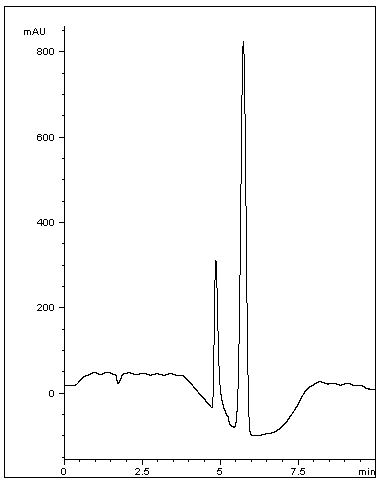Retention and Separation of Nucleotides
This Method demonstrates the ability to retain two Adenosine analytes using an Aqueous Normal Phase (ANP) Gradient. As the Amide is good for Retaining and Separating Sugars, this Method demonstrates a simple Gradient that can work with many other similar compounds.
Peaks:
1. Adenosine 5’-Triphosphate (ATP)
2. Adenosine 5’-Monophosphate (AMP)
Method Conditions
Column: Cogent Amide™, 4μm, 100Å
Catalog No.: 40036-10P
Dimensions: 4.6mm x 100mm
Mobile Phase:
—A: Acetonitrile / 0.1% Triethylamine (TEA) (v/v)
—B: DI Water / 0.1% Triethylamine (TEA) (v/v)
Gradient:
| Time (minutes) | %B |
| 0 | 95 |
| 1 | 95 |
| 3 | 80 |
| 4 | 80 |
| 5 | 95 |
| 6 | 95 |
Flow rate: 1.0 mL / minute
Detection: UV @ 254nm
Injection vol.: 1μL
Sample Preparation: Reference standards (1 mg/mL) in diluent of 50% Acetonitrile / 50% DI Water (v/v)
Needle Wash: 2uL DI Water
t0: 1.30 Minutes
K1: 2.65
K2: 3.25
α: 1.22
Note: Nucleotides are important Phosphate-containing compounds that are found in living cells and are associated with a broad array of metabolic and biological processes. They have significant roles in the synthesis of DNA and RNA, are involved in signal transduction pathways, function as coenzymes in biosynthetic pathways and serve as energy reservoirs in biological systems.
Capacity Factor – Relative Retention k = (tR–t0)/t0



